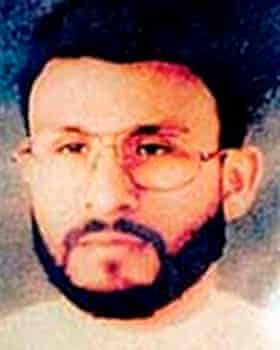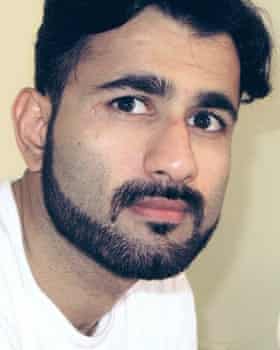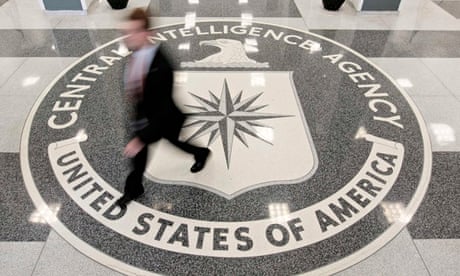Calls mount for release of full Senate report on the torture of Abu Zubaydah, to counter a narrative too many Americans still believe – that torture works
On the morning of 6 October the nine justices of the US supreme court filed into their wood-paneled courtroom in Washington to hear arguments in a dispute between the US government and Abu Zubaydah, a Guantánamo prisoner who has been held incommunicado and without charge for the past 20 years.
A government lawyer addressed the panel, arguing on grounds of “state secrets” that Zubaydah should be blocked from calling two CIA contractors to testify about the brutal interrogations they put him through at a hidden black site in Poland. Within minutes of his opening remarks, the lawyer was interrupted by Amy Coney Barrett, one of the rightwing justices appointed to the court by Donald Trump.

Barrett wanted to know what the government would do were the contractors to give evidence before a domestic US court about how they had “waterboarded” Zubaydah at least 83 times, beat him against a wall, hung him by his hands from cell bars and entombed him naked in a coffin-sized box for 266 hours. “You know,” she said, “the evidence of how he was treated and his torture.”
“Torture.”
Barrett said the word almost nonchalantly, but its significance ricocheted around the courtroom and far beyond. By using the word she had effectively acknowledged that what was done by the CIA to Zubaydah, and to at least 39 other “war on terror” detainees in the wake of 9/11, was a crime under US law.
After Barrett uttered the word the floodgates were opened. “Torture” echoed around the nation’s highest court 20 times that day, pronounced by Barrett six times and once by another of Trump’s conservative nominees, Neil Gorsuch, with liberal justices Sonia Sotomayor and Elena Kagan also piling in.
Justices Amy Coney Barrett and Neil Gorsuch use the word "torture" in the Abu Zubaydah hearing
The flurry of plain speaking by justices on both ideological wings of the court amazed observers of America’s long history of duplicity and evasion on this subject. “The way the supreme court justices used the word ‘torture’ was remarkable,” Andrea Prasow, a lawyer and advocate working to hold the US accountable for its counterterrorism abuses, told the Guardian. “You could feel the possibility that the ground is shifting.”
Prasow was astonished a second time three weeks later when Majid Khan, a former al-Qaida courier also held in Guantánamo, became the first person to speak openly in court about the torture he suffered at a CIA black site.

Khan’s description of being waterboarded, held in the nude and chained to the ceiling to the point that he began to hallucinate was so overpowering that seven of the eight members of his military jury wrote a letter pleading for clemency for him, saying his treatment was a “stain on the moral fiber of America”.
The ground does appear to be shifting, and as it does attention is once again falling on one of the great unfinished businesses of the 21st century: the US torture program. In the panicky aftermath of 9/11, when the world seemed to be imploding, the CIA took the view that the ends – the search for actionable intelligence to thwart further terrorist attacks – justified any means.
With the enthusiastic blessing of the justice department and George W Bush’s White House, the CIA abandoned American values and violated international and US laws by adopting callous cruelties that they consciously copied from the enemy.
They took one prisoner, Abu Zubaydah, and made him their experimental guinea pig. On Zubaydah’s back they built an entire edifice of torture – “enhanced interrogation techniques” as the bloodless euphemism went – that in turn was founded upon a mountain of lies. When the worst of the torture was completed, to spare themselves from possible prosecution the CIA insisted that Zubaydah remain “in isolation and incommunicado for the remainder of his life”.
“The torture program was designed for only one person – they gave him a name and that name was Abu Zubaydah,” Mark Denbeaux, Zubaydah’s lead habeas lawyer, told the Guardian. “After they tortured him, they demanded that he be held incommunicado forever so that his story could never be told. Since that moment the only people he has ever spoken to are his torturers, his jailers, and his lawyers, including me.”
Twenty years after Zubaydah was waterboarded, slammed repeatedly against a wall, sleep-deprived, face slapped, chained in painful stress positions, hosed with freezing water, stripped naked, and blasted with deafening noise, his story still has not fully been told. In 2014 the Senate intelligence committee released a heavily redacted, 500-page executive summary of its seven-year investigation into the torture program, generating headlines around the world and leading Barack Obama to conclude that “these harsh methods were not only inconsistent with our values, they did not serve our national security”.
Yet at the insistence of the CIA the full report from which the summary was drawn remains under lock and key to this day. All three volumes of it. All more than 6,700 pages. All 38,000 footnotes. All the detail distilled from 6.2m pages of classified CIA documents.
The persistent refusal to release the full Senate torture report has left a black hole at the centre of one of the most shameful episodes in US history. Now, with the T-word being heard even in the hallowed halls of the US supreme court, renewed calls are being made for the report to be published so that this sorry chapter can finally be closed.

No comments:
Post a Comment